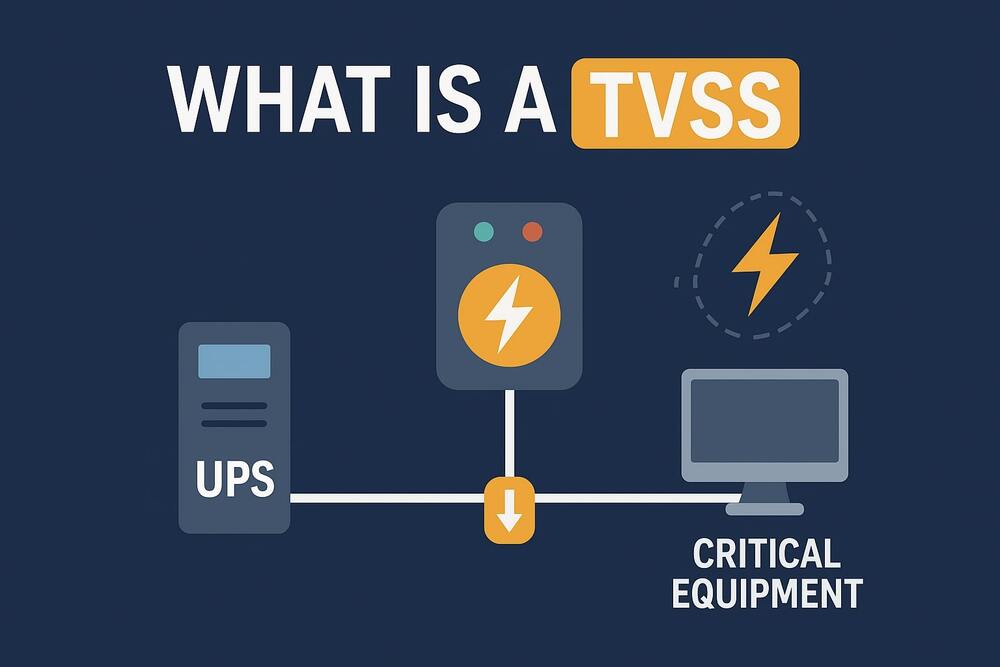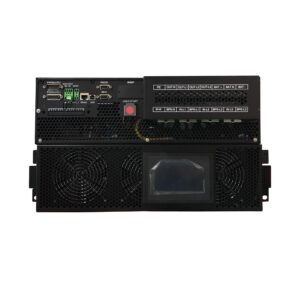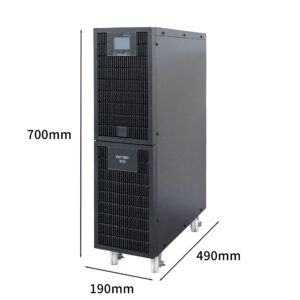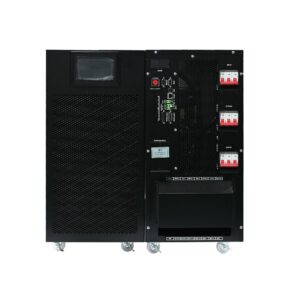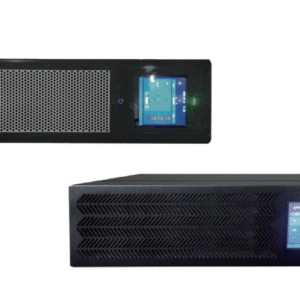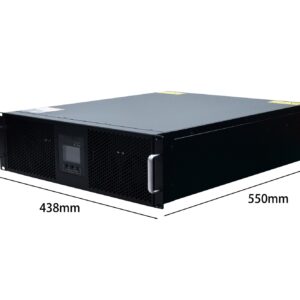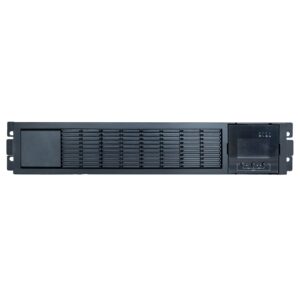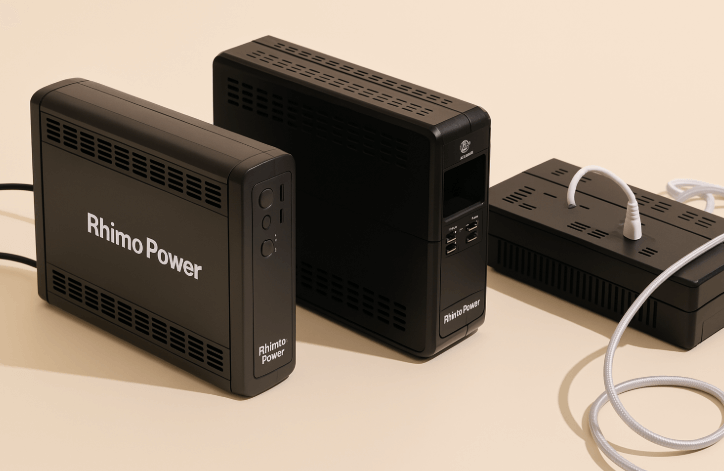Введение
В критически важных энергосистемах обеспечение бесперебойного и чистого электроснабжения — это не только резервное питание, но и защита от аномальных ситуаций. Хотя ИБП (источник бесперебойного питания) защищает от сбоев, его самого по себе недостаточно для защиты от всех сбоев электроснабжения. Именно поэтому... ТВССВ дело вступает — подавитель переходных напряжений.
В этой статье объясняется, что такое TVSS, как он работает и почему он важен для эффективного Защита питания ИБП.
1. Что такое TVSS?
А ТВСС (также известный как Устройство защиты от перенапряжения или УЗИП) предназначен для защиты электрических систем и подключенного оборудования от переходные скачки напряжения— кратковременные, но мощные скачки напряжения, вызванные молнией, коммутационными операциями или неисправностями в электросети.
При возникновении скачка напряжения TVSS действует как предохранительный клапан, ограничивая напряжение и безопасно отводя избыточную энергию на землю, благодаря чему оборудование, расположенное ниже по цепочке, остается защищенным.
TVSS против UPS
ИБП обеспечивает бесперебойность электропитания, но он не предназначен для поглощения больших скачков напряжения или импульсов, вызванных молниями. Устройства TVSS дополняют системы ИБП, предотвращая попадание этих скачков напряжения на чувствительные цепи.
ТВСС против СПД
Современные стандарты, такие как УЛ 1449 Термин «УЗИП» (устройство защиты от перенапряжения) используется в контексте SPD (Surge Protective Device). Термин «TVSS» относится к той же концепции, но в более старой терминологии.
2. Как работает TVSS?
- При нормальном напряжении TVSS остается неактивным.
- Когда напряжение превышает пороговое значение, он переключается в режим проводимости.
- Избыточная энергия перенаправляется в землю, поддерживая напряжение в безопасных пределах.
- TVSS сбрасывается после спада всплеска напряжения.
Качественные характеристики TVSS быстрое время отклика, низкое сквозное напряжение, и высокая способность выдерживать скачки напряжения.
3. Зачем нужен TVSS в системе ИБП?
Даже самые современные системы бесперебойного питания не могут полностью исключить все переходные скачки напряжения. TVSS для ИБП повышает общую защиту и надежность оборудования.
- Защита точки въезда: Защищает вход ИБП от внешних скачков напряжения.
- Защита обходной подачи: Гарантирует отсутствие скачков напряжения на всех линиях ИБП.
- Безопасность на выходе из системы: Защищает чувствительное оборудование, такое как серверы и ПЛК.
- Продолжительность жизни: Снижает нагрузку на компоненты ИБП и аккумуляторы.
- Сокращение времени простоя: Предотвращает сбои и дорогостоящий ремонт системы.
4. Типы и классификации ТВСС/СПД
| Тип / Класс | Типичное местоположение | Назначение/Применение |
|---|---|---|
| Тип 1 / Класс 1 | Линейная сторона служебного входа | Первичная защита от ударов молнии |
| Тип 2 / Класс 2 | Нагрузочная сторона сервисных или вспомогательных панелей | Защита на уровне общего распределения |
| Тип 3 / Класс 3 | Вблизи защищенного оборудования (место использования) | Локальная защита чувствительной электроники |
| Тип 4 | Промышленный, внутренний для машин | Защищает цепи управления и приводы |
Для достижения наилучших результатов используйте многоступенчатая стратегия защиты от перенапряжения— установка типа 1 на входе в помещение, типа 2 на панелях и типа 3 вблизи оборудования.
5. Лучшие практики интеграции UPS + TVSS
- Сопоставьте номиналы TVSS с требованиями системы по напряжению и току.
- Выбирайте устройства с низким сквозным напряжением и быстрым реагированием.
- Обеспечьте надлежащее заземление и соединение для максимальной защиты.
- Используйте защиту от перенапряжения на всех входных, выходных и обходных линиях ИБП.
- Проводите регулярные проверки и техническое обслуживание.
- Соответствовать УЛ 1449, МЭК 61643, и ИИЭЭ стандарты.
А ТВСС Сетевой фильтр (или сетевой фильтр) — неотъемлемый компонент любой системы бесперебойного питания (ИБП). ИБП обеспечивает бесперебойное питание во время отключений электроэнергии, а TVSS защищает от кратковременных скачков напряжения, которые могут незаметно повредить или вывести из строя вашу инфраструктуру.
Интегрируя оба подхода, вы получаете многоуровневый и устойчивый подход к качество электроэнергии и защита оборудования, продлевая срок службы и надежность всей вашей электрической системы.
Ознакомьтесь с нашими продуктами ИБП
Товары по категориям
-
Трехфазный источник бесперебойного питания, стоечный, серии RM33-UNR, 10-40 кВА
-
Башенный ИБП с двойным преобразованием Rhimo RM31- СЕРИЯ 10-20K-H
-
Башенный ИБП с двойным преобразованием Rhimo RM33-10-80K-H
-
ИБП с двойным преобразованием, стоечный, серии RM33-UNR, 10–40 кВА
-
Высокочастотный стоечный ИБП серии RM31-UNR 10-20 кВА
-
Высокочастотный стоечный ИБП серии RM11-UNR мощностью 6–10 кВА

